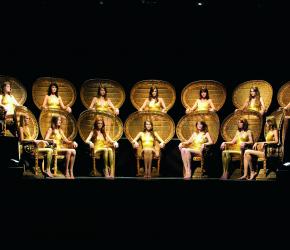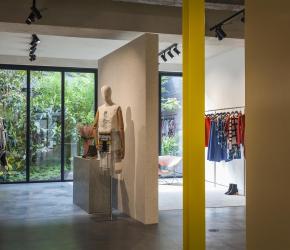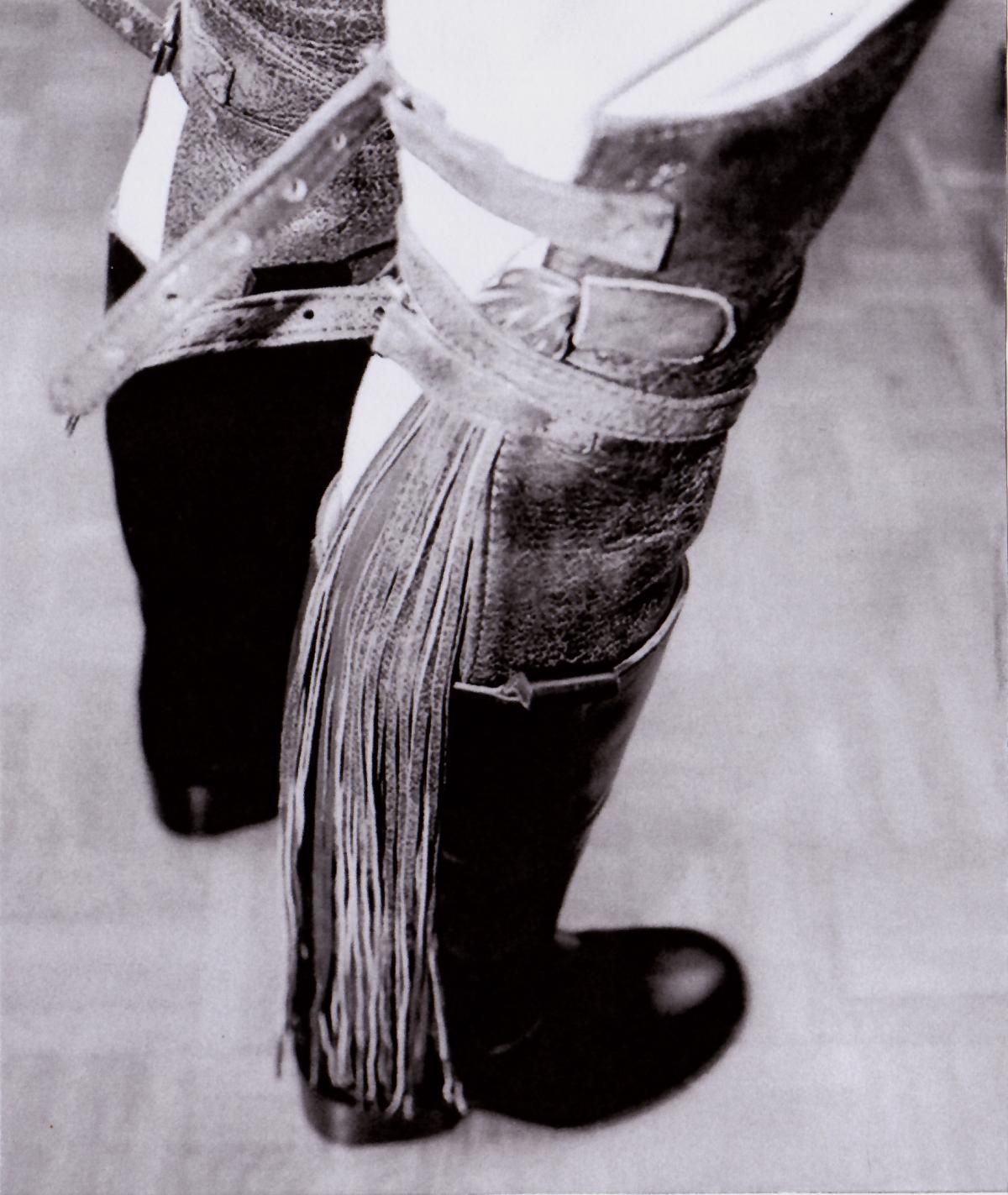

Is he a photographer or an artist? Ronald Stoops isn’t the one to answer that question. For more than thirty years he has been documenting Belgian fashion. Feeding it, making it more powerful even. His in your face images kick your conscience. If you dare to look…
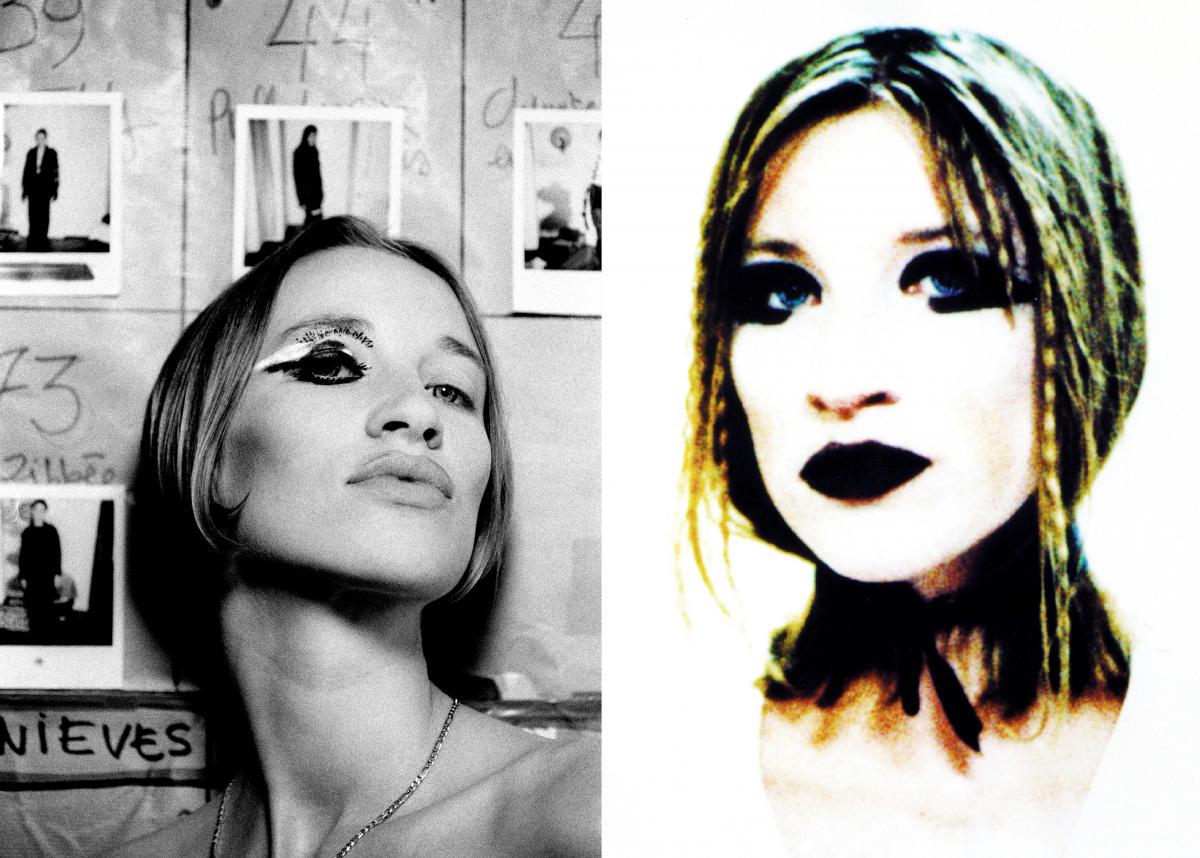
Ronald Stoops' take on Martin Margiela. Make-up Inge Grognard
“Have you heard the new Nick Cave allready?” While asking me the question, Ronald Stoops walks on towards the back of his private home. For more than thirty years, he has been living here with his wife Inge Grognard, the make-up artist, and their five cats (Beertje, Bandje, Dickie, Peppie and Muis to name them all). In this multi-cultural part of Antwerp called Borgerhout, a lot of the work is done. Stoops has a studio across town, but it’s here, in his home, that most of the preliminary discussions with designers or artists he works for take place.
I should tell you the first thing I see in the morning is a Ronald Stoops. It’s not a fashion picture hanging on my bedroom wall: the photographer snapped two beautiful ballerinas of Het Koninklijk Ballet Van Vlaanderen (The Royal Ballet of Flanders) holding on to each other tightly. When you look closer, you see one of them is struggling to breathe. The left one has all the power, the right one is on the verge of giving in. Think Black Swan, think utter darkness. And that one word says it all: in the work of Stoops there’s a lot of (often hidden) darkness.
“Did you know I used to run a fashion store?“
I first met Ronald end of the Eighties. He was a regular at the first shows of Martin Margiela. We hardly talked. Always standing in a corner or working from a distance, he documented the early careers of Margiela and Walter Van Beirendonck, who had been best friends at the Antwerp academy. “I guess it was Walter who urged me to start photographing”, says Stoops. “I had posed for Walter as a model. He urged me to buy a camera and start shooting myself. It was the time of Mode.Dit is Belgisch (a campaign sponsored by the Belgian government, putting young Belgian avant-garde fashion in the picture). I worked for magazines as the BAM who were quite revolutionary in Belgium at the time. We did the shoots in our living-room. And it was so much fun, working with Van Beirendonck, Dirk Van Saene, Ann Demeulemeester, Margiela, Wim Neels and Marina Yee, who did the styling.”
Stoops admits: he knew nothing about photography way back then. A friend of his lent him lamps. And what exactly was there to learn, if you wanted to go your own way? “I was a punker”, says Stoops. “Did you know I used to run a fashion store in Den Haag, in Holland, before I came to Belgium (Stoops is of Dutch nationality)? That was in the seventies, when we were all making our clothes ourselves and loved pants with zippers (he laughs out loud). I remember Barry Hay (the lead singer of Golden Earring) coming around all the time. We were juggling with paint and ducktape on clothes. Stuff you can hardly imagine today. But it’s probably the playground and the soil I needed for the work that I made afterwards.”
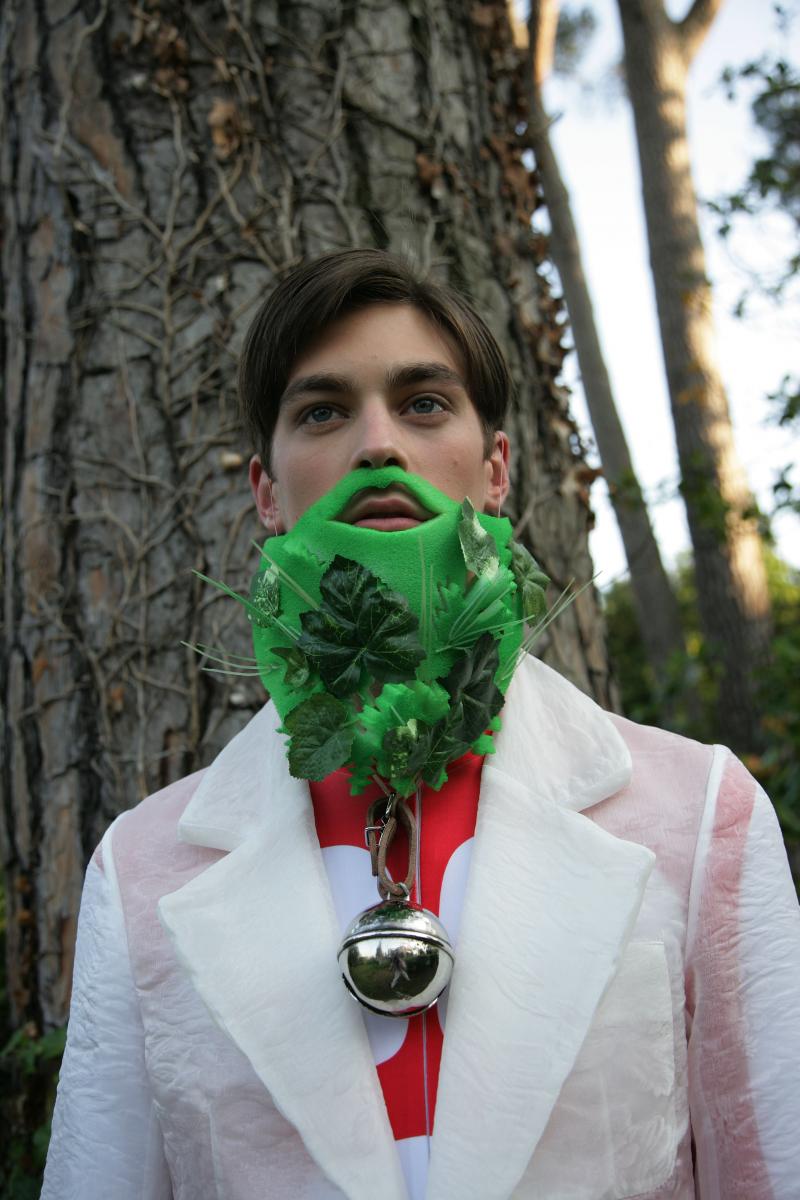
Ronald Stoops for Walter Van Beirendonck
Stoops met Margiela through Inge Grognard, who knew the designer from highschool. When Martin decided to study fashion in Antwerp, she followed him, to study make-up. They stayed friends and when Margiela showed his first collection in Paris, in October 1988, Inge was doing the make-up for the show and Stoops was the only photographer in the backstage, making photographs of models, of clothes, of Tabi-boots (yes, they were around back then allready). “I knew that something special was going on”, he remembers about that particular night. “Everything was so unusual. We were in this very dreary nightclub. The models were strutting through the audience. The music was harsh. The make-up was… well, everything was so different from anything that was going on in fashion at that time.”
Stoops loves working with fashion designers. He says he hardly needs to talk to them – although that’s exactly what he does in the weeks leading up to the show. “It’s strange to say, but… I don’t worry too much about the clothes. Most of the designers I work with are friends. We don’t need a lot of words. Working for Margiela wasn’t all too difficult: we were surfing on the same aesthetic wave so to speak. We had a lot of things in common. That said, I never improvize anything during a shoot. Everything is very well prepared.”
.jpg)
Ronald Stoops for A.F.Vandevorst
Stoops knows he often looks for limits. His photographs are always bordering on the edge, whether it is related to light, to gender, to the concept of beauty. “I’ve always tried to make my own aethetics. And if you consider my work, you can see there’s always a grain of darkness in there, and a subtle mistake. In such a way that Dries (Van Noten) at one point asked: ‘Don’t you have an image that looks a bit cleaner?’ You see, I need to have that small thing that shouldn’t be there in the back of the picture. This is exactly what Margiela has always liked about my work.”
In the book ‘IngeGrognard/RonaldStoops’ (published in 2010 by Ludion), it’s clear how defining Stoops’ work has been for designers such as Margiela, Van Beirendonck, Dries Van Noten, A.F.Vandevorst, Jurgi Persoons, Haider Ackermann, Raf Simons and Veronique Branquinho. Defining in a sense that I have the pictures very clearly in my head. It’s as if he made an archive of those early years. Next to the photographs that Stoops took from every Martin Margiela show, I think of the bed-show of A.F.Vandervorst for summer 1999 (with all models sleeping in spare hospital beds just before the show opened), and I can vividly remember the David Hamilton atmosphere surrounding the moodpictures of Veronique Branquinho’s very first collection for summer 1999 (the girls are walking through a forest in white gowns). The schoolboys for Raf Simons in 1997? Stoops shot them. Van Beirendonck Aesthetic Terrorist collection for summer 2002? Again Stoops.
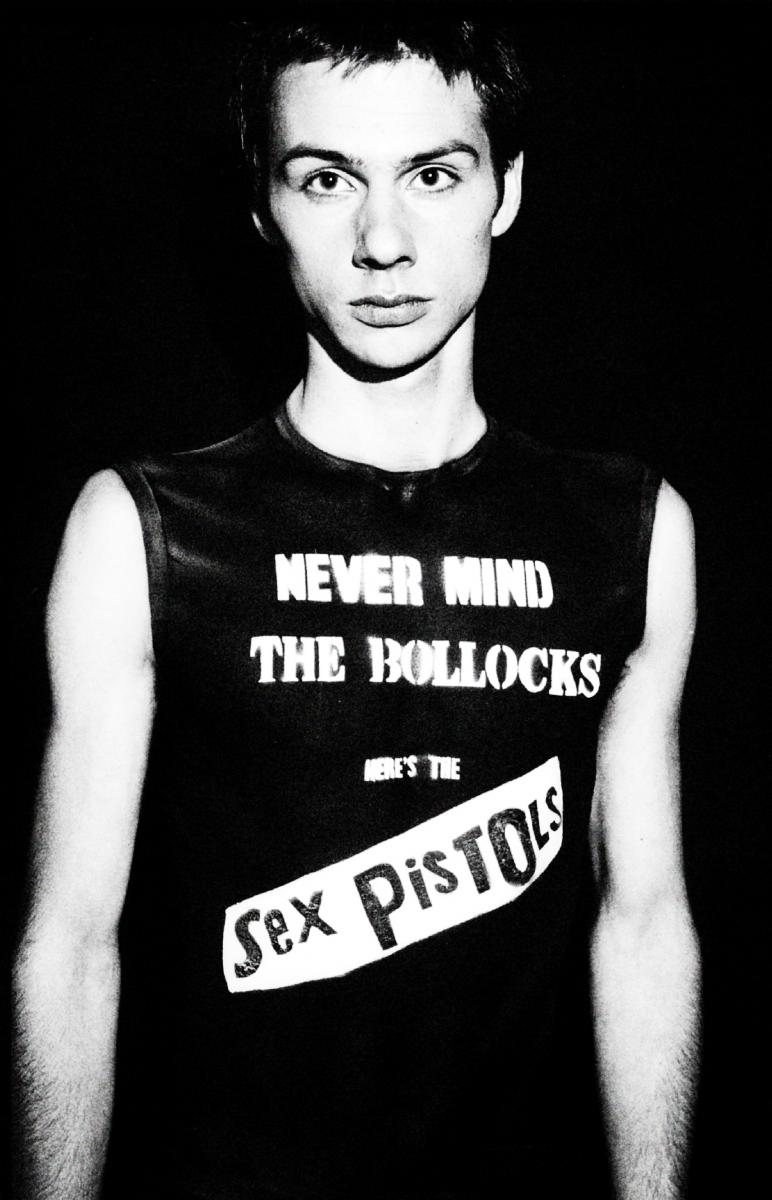
Ronald Stoops for Raf Simons
But where there’s Stoops, there’s almost always Grognard. “Our collaboration has been essential in both our careers”, says Stoops. “We share a same view on aesthetics. We talk and shout, scream even, but then suddenly there’s the image we were waiting for. We can be very hard, even rude to one another, but we need that kind of honest feedback. As if we lift each other up to higher grounds.” When talking about his work, he mentions the importance of the eye, of how you frame a picture, the choice of the model, not just the clothes.
Stoops has worked for Belgian magazines such as A Magazine, but his international work includes fashion stories and features for i-D magazine, V-Magazine, View on Colour and many others. Although he might have moved to higher grounds, working from London or Paris, he decided to stay in Antwerp. “I have done a few editorial jobs in Paris”, he says. “I remember Richard Buckley (Tom Ford’s husband, and at the time editor-in-chief of Vogue Hommes International) being incredibly friendly and forthcoming. But… (a bit lost for words) I have never felt like taking an agent. I guess I did not have the right attitude for this. I’m a very critical person. I don’t accept authority, I have trouble with people that don’t understand my work. I guess that’s the hidden punker still out there (laughs). But… I like doing things my way. With designers such as Margiela and Van Beirendonck, I’ve always been able to do exactly what I wanted. I guess I don’t even think about it, it’s just always been like that. I now work with Iris Van Herpen and that feels great too. She hardly says anything, except for what she likes and dislikes. That’s clear enough to me. (he smiles)”
Does he have icons out there? Photographers he follows? Works he would loved to have shot himself? “The first catalogue by Nick Knight for Yamamoto. Now that’s something I would have liked to make. I also remember a Yohji catalogue by Max Vadukul. I love Jeff Wall’s work and the way he capsures the light in these New York streets. I also like the work by Jean-François Lepage and Tony Viramontes. And some of Peter Lindbergh’s pictures. But honestly, I hardly follow the photography scene. I never buy magazines.”
Stoops finds pleasure in collaborating with soulmates. He claims he needs the feedback of others. “I couldn’t just walk into the woods and take pictures, if that’s what you’re asking. Not that I cannot work alone. I’ve learned everything by myself. Taking pictures inside and outside. Working with and without lamps. Black and white, colour. Photoshop. But I always try to do it as natural as possible. And on the spot. I don’t really like staging the moment.”
Next to his career in fashion, Stoops also loves collaborating with Narcisse Tordoir, a Belgian artist well-known for his drawings, paintings and mixed media performances. Tordoir and Stoops share a long friendship going back forty years. They feed each other with ideas and trigger each other’s otherness. An example of their collaboration hangs on the first floor of Stoops’ house: it’s a picture of Stoops, showing a bunch of schoolboys looking at a painting by Tordoir. It’s a great interpretation of what looking at art can be. Any other big plans? Stoops shrugs. “I’m not that kinda guy. I don’t know. Maybe venture into video.”
One last thing: isn’t it wonderful for Stoops to see Willy Vanderperre’s skyrocketing career, knowing that this photographer (known for his work at Jil Sander, Givenchy, Dior) was his assistent a few years ago? Stoops looks me in the eye. And says: “He’s one of the best right now. You just feel he knows so much. And he’s got the eye. He always had.”
